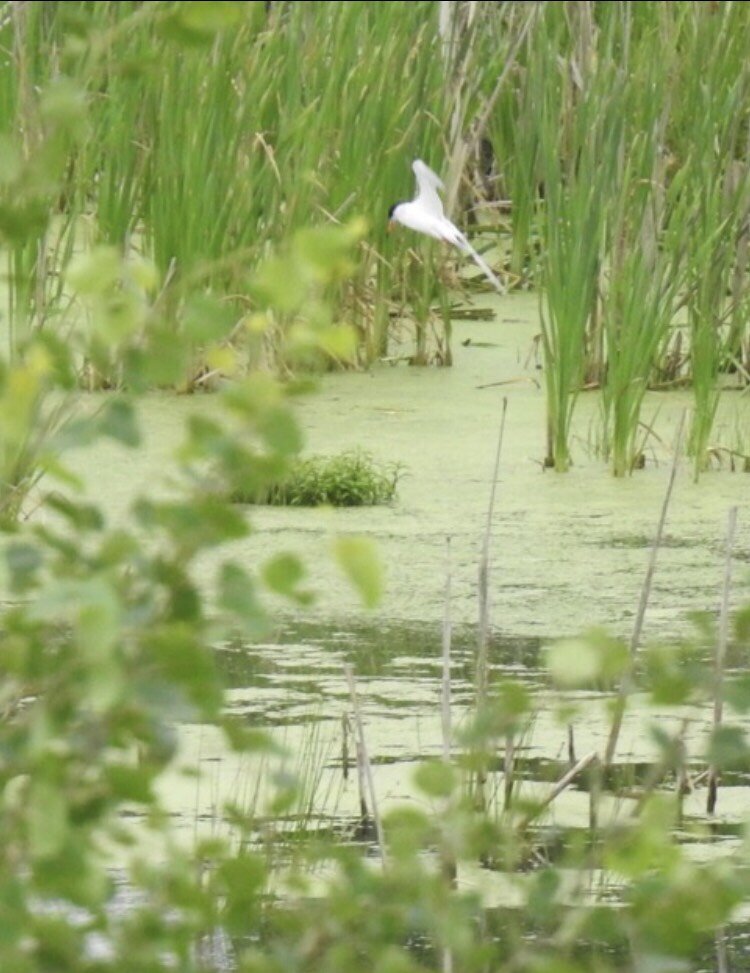The Yellow-headed Blackbird resembles the Red-winged Blackbird. Both nest in marshes, both are mostly black with a splash of color, and both have a coarse and metallic sounding call. While similar, the Yellow-headed Blackbird is singular in the absolute frenzy of its call, its yellow head, and its more fine-tuned habitat preferences. Yellow-headed Blackbirds nest in areas with more than 30cm of water, in emergent vegetation and floodplain forests.
Photo by Mick Thompson
Wisconsin is on the edge of the breeding range of the Yellow-headed Blackbird. It is a more western bird, and its range stops abruptly at Lake Michigan. Isolated populations in Wisconsin and northeastern Illinois are of conservation concern since populations here have diminished greatly in recent decades. While the core breeding area shows an increasing population trend, Wisconsin and Illinois show steep declines.
Beyond Breeding Bird Survey data, local lore tells a similar story. A barn along I-94 west of Lake Mills used to have a large fading mural of a yellow-headed blackbird, since replaced with species from a global perspective. A pond along Highway 89 used to be called the blackbird pond, since Yellow-headed Blackbirds nested there, but since conifer plantings crowded the edge of the water, blackbirds can’t see the pothole pond’s enticing features.
Research in Illinois suggests that Yellow-headed Blackbirds have an interesting problem: immigration. In their favor, blackbird nests in Illinois and Wisconsin tend to be productive, and Yellow-headed Blackbirds defend their territories from Red-winged Blackbirds quite well. They have high reproductive output and relatively low mortality, so why is the population declining here?
Juvenile Yellow-headed Blackbird, photo by Arlene Koziol
It appears that juvenile birds are not immigrating to these isolated breeding ranges. There are many spots in southeastern Wisconsin with extensive emergent vegetation, appearing to be very good Yellow-headed Blackbird habitat, but no breeding pairs. I’ve wondered why restored marshes, sloughs, and ponds at Faville Grove don’t have Yellow-headed Blackbirds. They need immigration reform. Juvenile birds have low fidelity to nest sites, so when they migrate in spring, the austere drainage of Illinois and eastern Iowa proves uninviting. Presented with a landscape of parched wetlands, the birds teeter to the northwest, to the core of their range.
Photo by Arlene Koziol
You could find migrating Yellow-headed Blackbirds at Faville Grove, but for a breeding colony you could head to Zeloski Marsh, Rose Lake, Schoeneberg Marsh, or along the Bark River; you can’t miss their song, which sounds like a malfunctioning robot.
Written by Drew Harry, Faville Grove Sanctuary land steward
Cover photo by Arlene Koziol





















